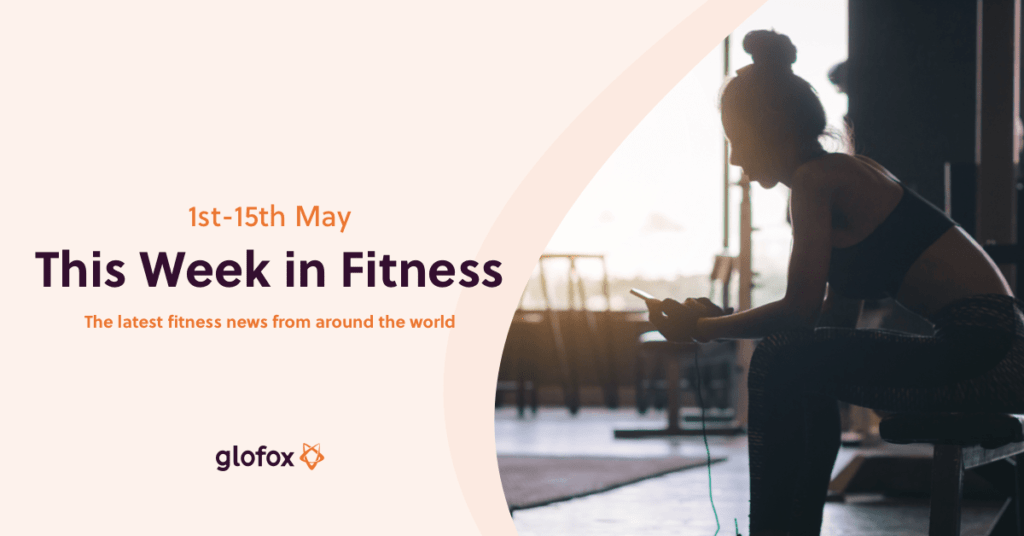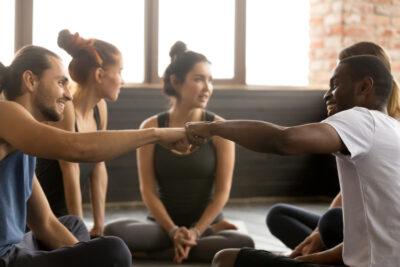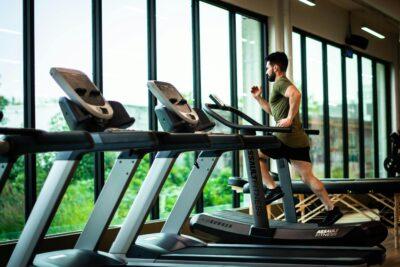The AFS releases fitness studio reopening guidelines, and Covid-19 will revolutionize the future of the global fitness industry.
Covid-19 Will Revolutionize The Fitness Industry Globally In These Key Ways
Les Mills Media felt the Covid -19 Situation early in January in China in the clubs they supported, and those they own in across the globe. Now consumer sentiment is way higher now in China than the west in early May and gyms are opening but Jean Michel Fournier believes that the feel is different because this is not a return to business as usual but the start of the creation of a new norm. Consumer behavior has clearly changed. People are craving connections through exercise and video conferencing has become more normal. Live streaming and a life environment drive a connection in ways we never thought about before Covid-19. The strangest end of this is the shortage of gym equipment you can now find online as people move fitness into the home wider and deeper than ever before.
Via Forbes. Read full article here.
AFS Releases Fitness Studio Reopening Guidelines
(MINNEAPOLIS, MN, May 13, 2020) – The Association of Fitness Studios (AFS) today released its fitness studio reopening guidelines in the wake of the COVID-19 virus. Aimed at keeping clients safe and welcoming them back – when the time is right – has been an on-going effort to ensure the highest level of precaution is taken.
While completely aware that governmental agencies are wrestling with the same issues, AFS’ guidelines are intended to be fundamental “to-do’s” with the understanding that individual states and cities will have their own specific recommendations.
Via Club Industry. Read full article here.
Europe Active Publishes COVID-19 Operating Standards for Gyms and Health Clubs
Representative body, EuropeActive, has today (11 May 2020), published new standards for gym operators advising them on operating gyms and health clubs under COVID-19.
Called Summary of current recommended practices for operating under Covid-19 restrictions, the document is designed to be used in conjunction with local laws and guidelines.
EuropeActive says: “This is general guidance only for consideration by operators when re-opening their facility…national conditions may apply and alter this guidance.”
The standards assume that a number of areas of clubs will not be open or operating, including swimming pools, saunas, spa areas and outside activities and that cafés and changing rooms will also be closed.
Via Health Club Management. Read full article here.
Will We Still Want to Pay for Gym Memberships When Lockdown Is Over?
It’s been well over a month since any of us visited a gym, but that’s not to say we’ve given up exercise. We’re running to get outdoors, joining Instagram live workouts and dance classes for a sense of community, and stretching in unison thanks to Yoga with Adriene (and Benji the dog). And that’s not even mentioning big kids and school star-jumping with PE teacher to the nation, Joe Wicks.
Nearly a third (31%) of Brits believe they’re actually doing more daily exercise now than before the start of lockdown, Nuffield Health research suggests,
Crucially, our newly-established fitness habits are free, or cost very little, at a time when so many across re facing financial uncertainty. Unsurprisingly, almost four in 10 people plan to change their fitness routine permanently post-lockdown, according to a survey by fitness course provider OriGym.
Via HuffPost. Read full article here.
The Evolution of Home Fitness
Most people remember their first encounter with home fitness. As a kid in the early ‘90s, I remember waking up extra early at the weekends to watch a TV programme called ‘Mousercise’, a Disney show with aerobics instructors in full Mickey and Minnie costumes teaching kids calisthenics. I was far too lazy to participate, but was fascinated by the spectacle nonetheless.
For those born slightly earlier, home fitness might be defined by memories of Jane Fonda grapevining across their TV screen in legwarmers, while for others it might be taking their inaugural steps on that weird-looking contraption known as a treadmill.
Home fitness has been in our lives for decades – and it’s taken on a new role since the Covid-19 pandemic closed gyms around the world. Whether it’s a yoga class on Zoom or panic-buying a Peloton, many of us are trying to find ways to exercise effectively within four walls. But where did the industry of Thighmaster and Wii Fit come from – and where’s it heading after the pandemic?
Via BBC WorkLife. Read full article here.
Does the Fitness Biz’s Digital Shift Have Post-COVID-19 Endurance?
Americans have a complicated relationship with physical fitness, particularly when it comes to getting enough exercise. According to Centers for Disease Control and Prevention (CDC) data, only about 23 percent of American adults are getting the recommended amount of exercise per week, data consistent with measurements by the International Health, Racquet and Sportsclub Association (IHRSA) indicating that about a quarter of all Americans have gym memberships they report using regularly. For the majority of Americans, therefore, the era of social distancing is a loss in many ways, but at least it is an excellent reason to skip going to the gym.
But for the quarter of Americans who are into the gym and have made it a regular part of their routine, the loss is strongly felt. The global fitness industry is worth roughly $100 billion a year, $27 billion of which comes from U.S consumers. And it is an industry that virtually shut down on a dime in the last month, as fitness studios, gyms and even virtual studios where tele-classes are filmed by instructors have shut their doors amid the coronavirus pandemic.
Via PYMNTS.com. Read full article here.
Out-Of-Work Trainers Hope Gyms Can Make Gains After Pandemic
NEW YORK — During a normal week, fitness instructor Jason Tran would dart among grueling group spin classes, high-intensity interval training sessions at boutique studios in Manhattan and an occasional one-on-one workout with private clients.
But for Tran and the tens of thousands of other New York workers who make up the state’s $3 billion fitness industry, the coronavirus pandemic shut down most of the business in mid-March. The virus forced many workers into long, virtual lines for unemployment insurance and onto Zoom and Instagram to maintain relationships with their clients.















